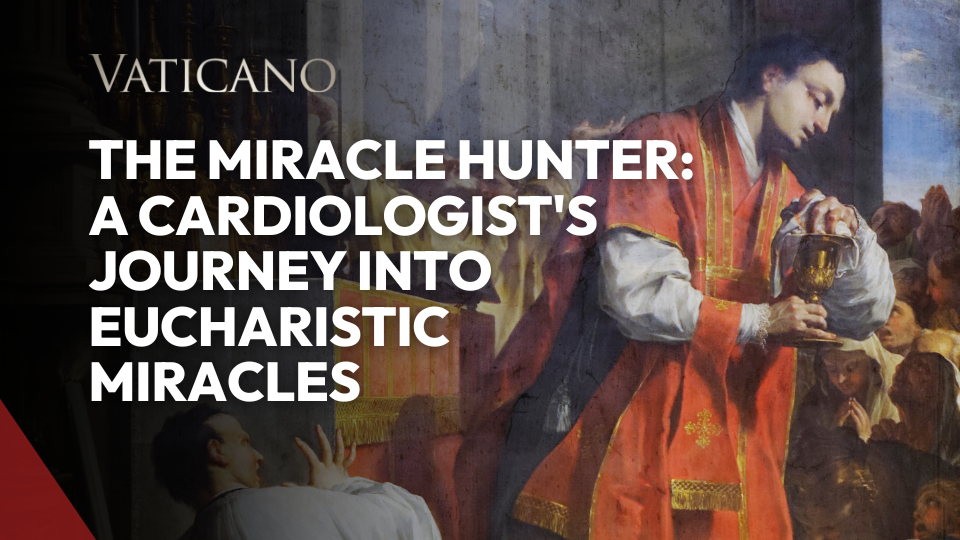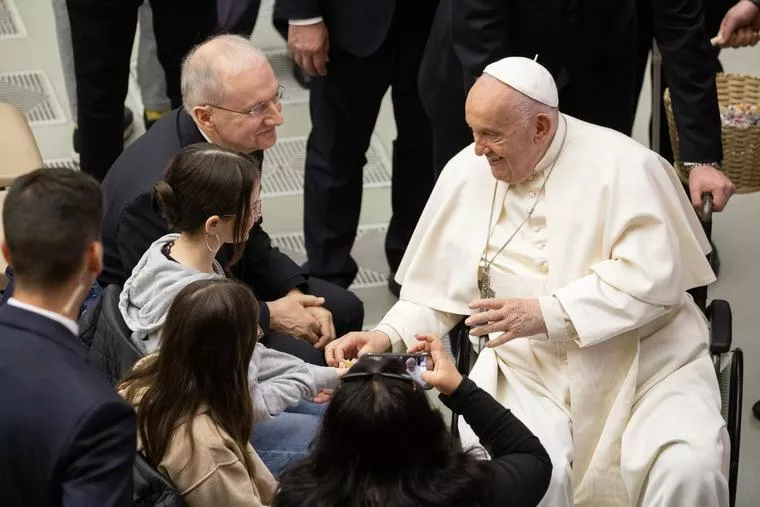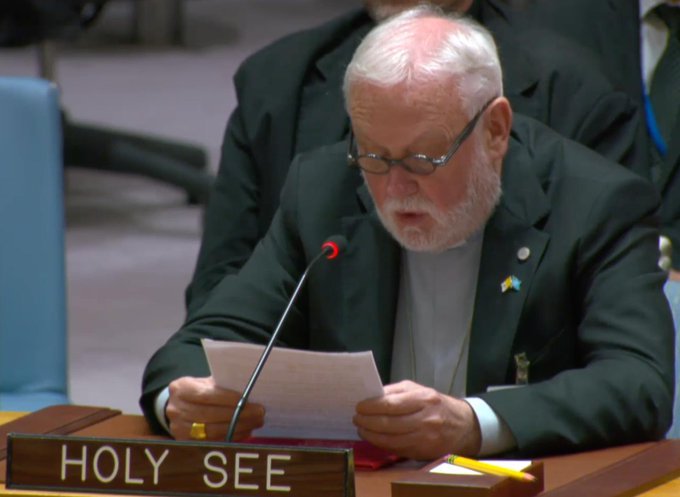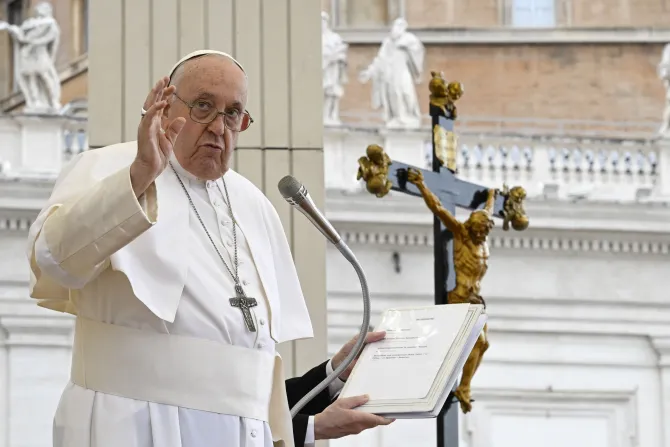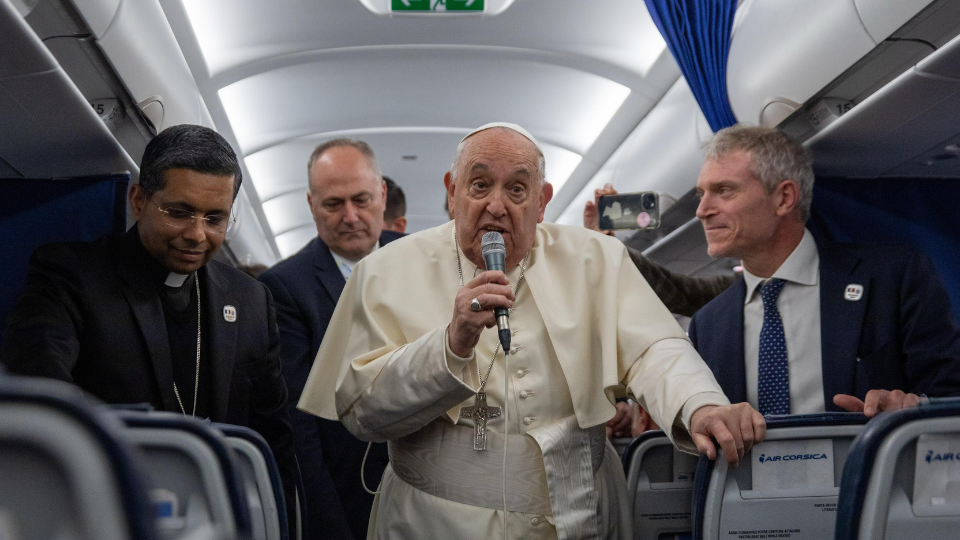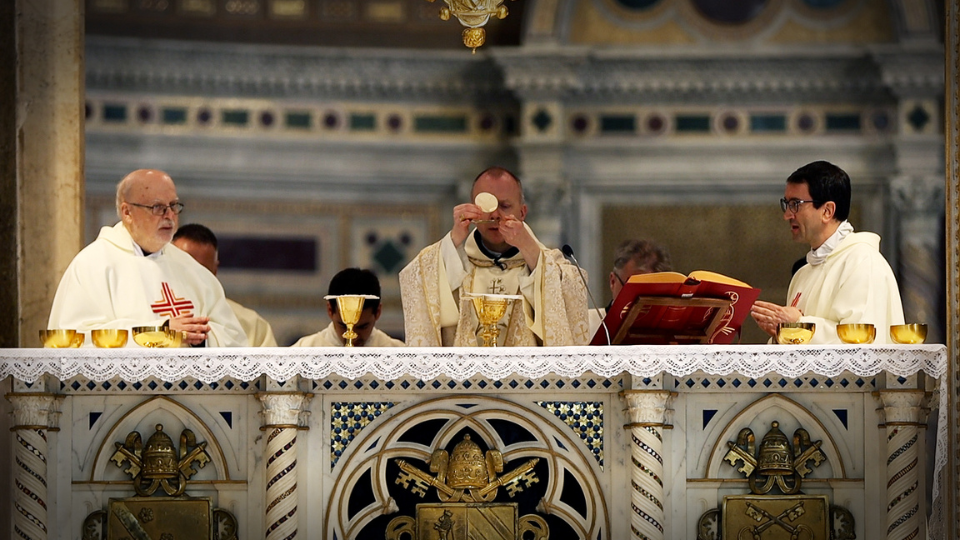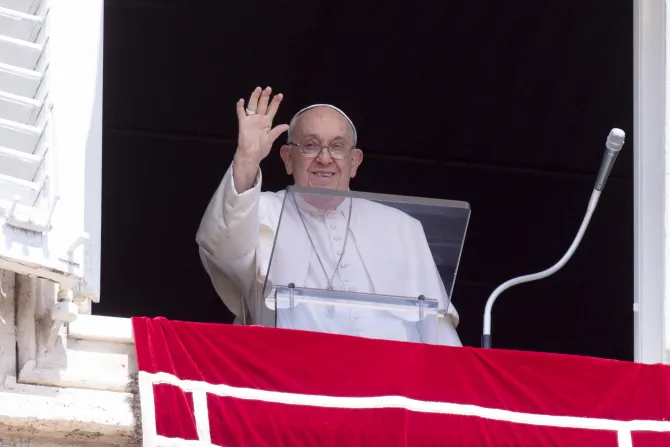Over the centuries, 107 documented Eucharistic miracles have occurred and been approved for veneration by the Catholic Church. While some miracles include protection of Hosts, levitation, and images of Jesus on the Host, most of the miracles are a manifestation of the flesh and blood of Christ Crucified. EWTN Vatican sits down with Dr. Franco Serafini, a cardiologist from Bologna, Italy, who has dedicated his life to examining Eucharistic miracles.
When we think of Eucharistic miracles, that of Lanciano comes quickly to mind. “In Lanciano,” Serafini says, “what happened is something very far away in time.” And, “The story, which is more legend than history, tells us about a monk of Basilian spirituality, who one day during the 8th century, was celebrating the Mass, but he was doubting the real, the true Presence of Jesus Christ in the wine and bread, and a miracle happened as an answer to his lack of faith.”
The story continues, “At the moment of consecration in his hands, the bread became flesh, and the wine became blood.” Truly a miracle in that event itself, even more miraculous, some might say, along with Serafini, “is that this double relic made of flesh and blood is still here with us 13 centuries later.”
Serafini’s interest in Eucharistic miracles started about eight years ago. The Italian cardiologist knew that several Eucharistic miracles had been scientifically examined, but he was unable to find any original documentation. He was additionally disappointed with the way the miracles were presented in books and media. Aware of their immense apologetic potential, Serafini decided to travel the world to examine some of the miracles himself.
He described this process, “I looked for the original paper available in dioceses around the world in South America, in Poland, or here in Italy, and I also went personally to places to meet witnesses and also the medical doctors involved in recent studies, and my research became a manuscript, and then a book that was published. The title is ‘A cardiologist examines Jesus.’”
Among the many places Serafini visited and the many miracles he examined — such as the Eucharistic miracles in Buenos Aires, Argentina; Tixtla, Mexico; and in both Legnica and Sokolka, Poland — the Eucharistic miracle of Lanciano, Italy, remains the most famous one.
At the initiative of the Archbishop of Lanciano and with authorization from Rome, the Franciscans of Lanciano decided, in 1970, to have the relics examined scientifically.
Doctor Odoardo Linoli, head of the laboratory of clinical analysis and pathological anatomy of the hospital of Arezzo, was entrusted with the study. After careful and rigorous examinations, Linoli presented his findings on March 4, 1971.
Serafini explained the many steps of Linoli’s studies, “First of all, he demonstrated that the flesh is myocardial tissue; it is a fragment of the heart. Second, the blood is True Blood. And third, the flesh and blood are human. Fourth, the blood type he discovered separately in flesh and blood is the AB blood type, the rarest in humans. And then also, fifth, the presence of the proteins with an electrophoretic ratio that is similar to that of fresh blood. And six, the presence of minerals in the blood.”
What is particular about Eucharistic miracles is that they also often have features that are scientifically unexplainable and irreproducible. For instance, in both Tixtla, Mexico, and Sokolka, Poland, the miraculous Hosts and heart tissues are inexplicably intertwined on a microscopic level.
The five Eucharistic miracles Serafini closely examined present four common features. He says he has found “five times out of five: the presence of the heart, of myocardial tissue, and suffering myocardial tissue. Then we have blood, of course. And then we have a blood type. It is the AB blood type, the blood type that is also found in authoritative Passion clothes such as the Shroud of Turin, of course. Also, we find DNA. Tests confirm the presence of DNA, but this DNA behaves in a very strange way because it is an elusive DNA.”
Unlike regular human DNA, the DNA found in Eucharistic miracles is not legible in its entirety. Some sequences are inexplicably missing, making the miraculous DNA impossible to trace or reproduce.
Serafini believes that mystery still remains in the study of Eucharistic miracles. He says, “Finding the same DNA in different Eucharistic miracles would be too strong of a confirmation of the authenticity of the Catholic Eucharist,” It is something that would “annihilate, destroy, and humiliate our faith.” That is, it would make our belief in the miracle of the Eucharist unnecessary. Serafini believes, “We have to believe in the Eucharist. We don’t have to know the Eucharist as a proven scientific fact.”
In light of these intriguing findings and the enigmatic nature of the DNA in Eucharistic miracles, Serafini poses a fascinating perspective. He believes the absence of easily traceable DNA in these miracles might serve a higher purpose. This lack of concrete scientific evidence allows faith to flourish unencumbered by empirical certainty. To him, the potential for an indisputable biological connection might overshadow the essence of belief itself. The mysterious and unexplainable nature of this miraculous DNA, in his view, preserves the sanctity and spiritual significance of the Eucharist, reinforcing the idea that faith should transcend scientific proof.
An even further reality to be contemplated is the following, “If Eucharistic miracles are genuine, are true, and many times they are, they are recognized by Catholic authorities. If the Eucharistic event is true, that means that we have a biological trace that comes from the body of our Lord Jesus Christ,” that is, “a biological trace in this world.”
[Adapted by Jacob Stein]

